The older I get, the more my garden experience is about celebrating the echo of plants — the ghosts of flowers, which provide so much additional beauty for months on end. The absence of growth, the muted colors and earthen tones of the leftovers resonate with me, almost as if the garden is speaking to me in a warmer, more meaningful voice.
The longer I design gardens, the more I plan for the afterimages of flowers and grasses, and I think if you can start seeing your landscape in the same way, your garden experience, from design to morning strolls, will become more transcendent and alive. Following are lots of perennials and grasses with seed heads that can highlight the autumn and winter garden.

Adam Woodruff + Associates, Garden Artisans
Let’s start by looking at a garden that keeps in mind the season in which most of us hunker down inside with an Irish coffee. To me this landscape succeeds precisely because of the seed heads atop the perennials and grasses — I think we’d say the same if those were all abloom with a rainbow of flowers. This is a garden I want to be in during winter as much as summer, if not more. I suspect hungry or cold wildlife might feel the same.
See more photos of this garden throughout the year
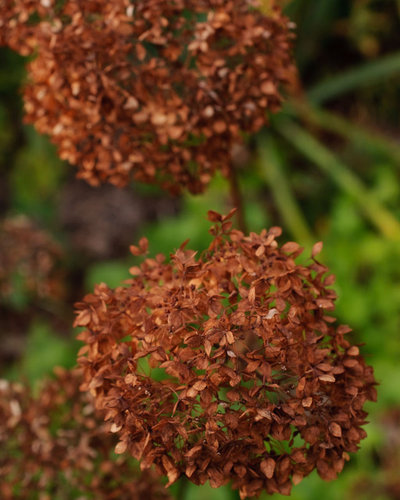
Barbara Pintozzi
Hydrangea is a garden standby that’s dependable and widely available. The big puffballs add a distinct dimension and color to any autumn or winter garden as they catch light at different times of the day. Topped with snow, they look even more enchanting.
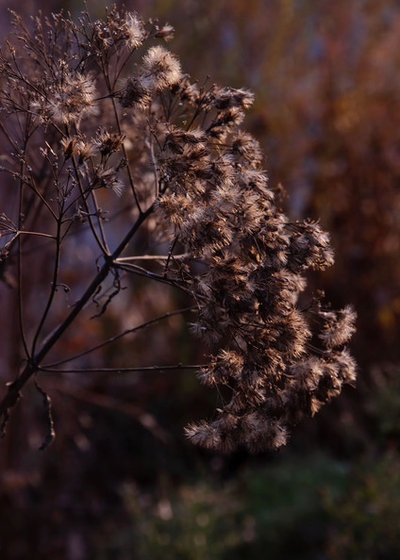
Barbara Pintozzi
Joe Pye Weed (
Eupatorium purpureum) has clumps of tall stalks with delicate seeds floating like little halos. When the seeds lift off, you’re still left with an umbrella of structure and texture that withstands winter winds.
How to grow Joe Pye Weed
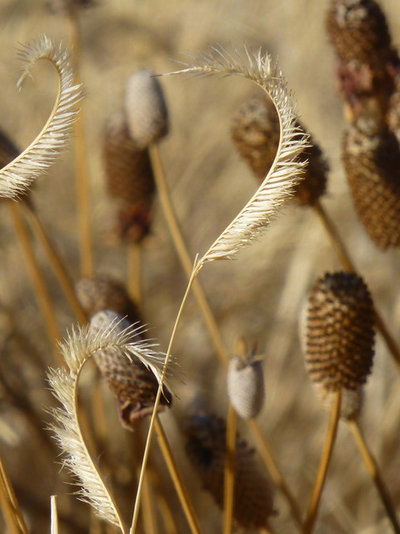
Waterwise Landscapes Incorporated
Here we have a nice combo of blue grama grass (
Bouteloua gracilis) seed heads paired with Mexican hat coneflower (
Ratibida columnifera). I think the juxtaposition of the hard, geometric shape of the coneflower next to the soft wisps of grass is stunning. And as serendipity would have it, I have this same combo on the side of my house.
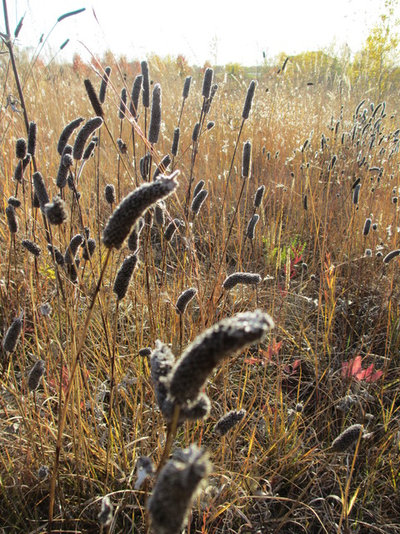
Benjamin Vogt / Monarch Gardens
Purple prairie clover (
Dalea purpurea) has unique bottlebrush blooms that pollinators love, and a stark gray autumn hue that this garden designer swoons over. Put it in front of prairie grasses, like sideoats grama (
Bouteloua curtipendula) or prairie dropseed (
Sporobolus heterolepis), and you can really set it off.
How to grow purple prairie clover

Laara Copley-Smith Garden & Landscape Design
No garden should be without at least a few of the Liatris species, like this
L. pycnostachya. The seed heads don’t last too long, what with windy autumn days and hungry birds, but you’ll be thankful while they’re there.
How to grow Liatris
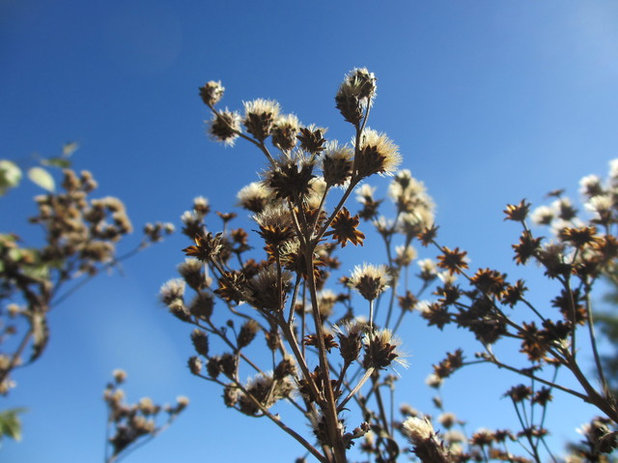
Benjamin Vogt / Monarch Gardens
I love tall plants, both for their architecture and their use as bird perches. At 4 to 6 feet tall, ironweed (
Vernonia fasciculata) makes a nice late-fall ornament in any garden, seen from far away when in groups or clumps.
How to grow ironweed
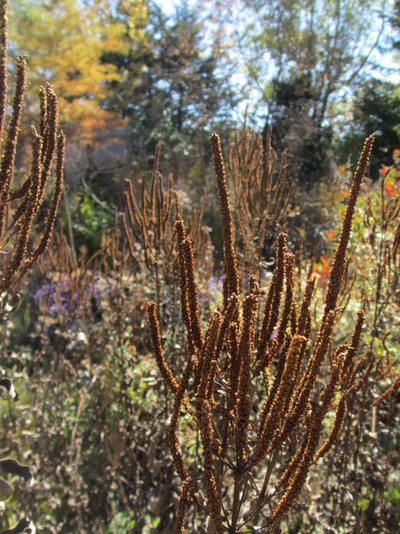
Benjamin Vogt / Monarch Gardens
The spent spikes of Culver’s root (
Veronicastrum virginicum)
last almost the entire winter and will look great above any snow drifts that may accumulate. I place this perennial in the middle of beds and let it steal the show postbloom.
How to grow Culver’s root
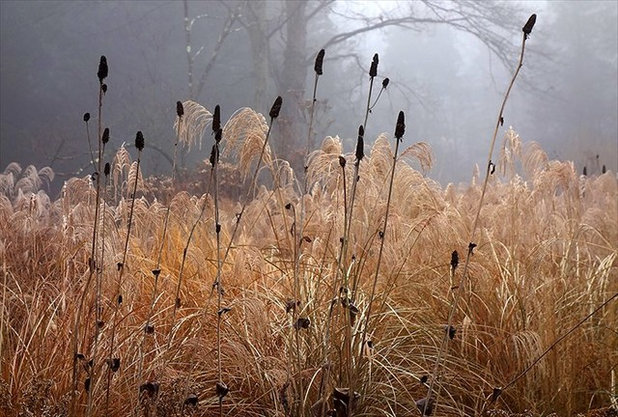
Great coneflower (
Rudbeckia maxima) shoots up tall, yellow flowers that leave behind stupendous conical seed heads. They look great placed among grasses, seen here in James Golden’s garden, sort of like burned fireworks frozen in time on their way to exploding far above.
How to grow 5 species of coneflower
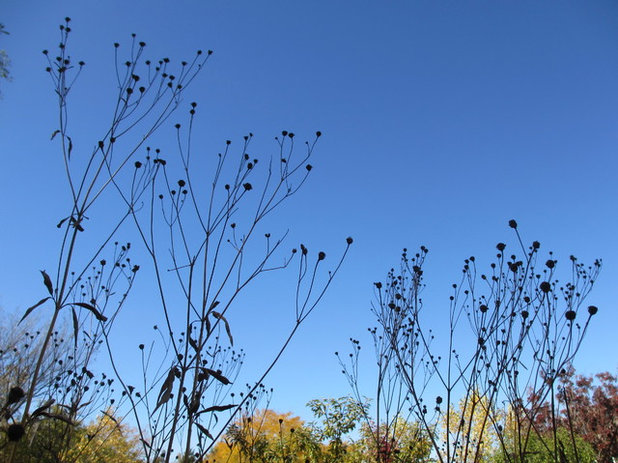
Benjamin Vogt / Monarch Gardens
Tall tickseed (
Coreopsis tripteris)
may have tiny seed heads, but as you can see, they are arranged in such a way that they come together for bigger visual impact. I just love them against a bright blue sky — they look like hands and arms reaching up for warm sunlight.
How to grow tall tickseed
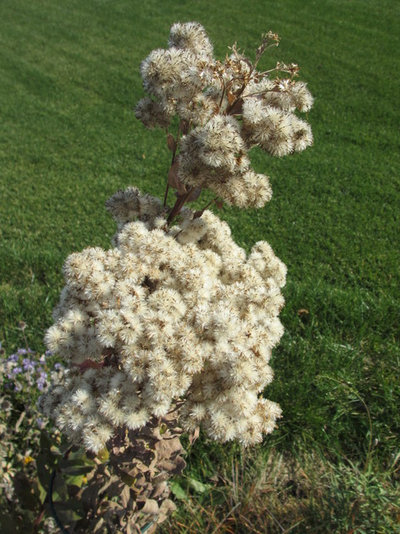
Benjamin Vogt / Monarch Gardens
Most goldenrods have attractive puffs of smoky inflorescence this time of year, but this stiff goldenrod (
Solidago rigida) steals it. I mean, look at that puffball — don’t you just want to leap in and rub your face in it?
How to grow stiff goldenrod
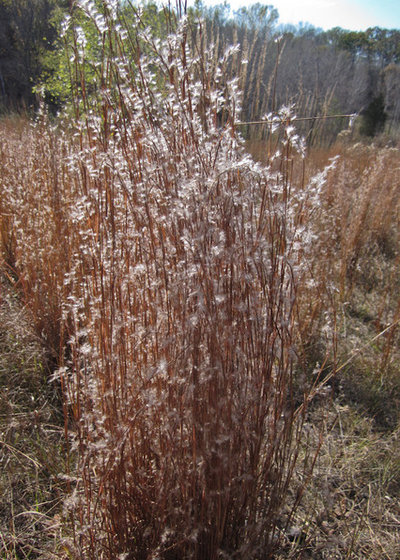
Holm Design & Consulting LLC
Little bluestem (
Schizachyrium scoparium) has fall color that’s superior to many nonnative grasses, while its seed show reminds me of hair glitter. Get a clump or drift of these in even a small border, and you’ll be pleased with the results.
How to grow little bluestem
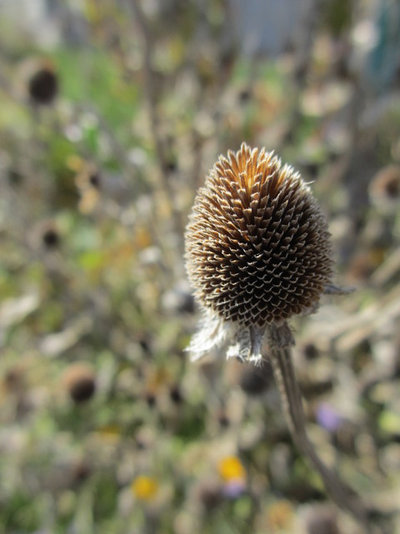
Benjamin Vogt / Monarch Gardens
Black-eyed Susan (
Rudbeckia hirta) will provide nice, low drifts of persistent seed heads during winter. Sometimes it even still spits out a few flowers in autumn. Again, this might be something that will be shown off even more in front of grasses, especially if those grasses are backlit by the low winter sun.
How to grow black-eyed Susan
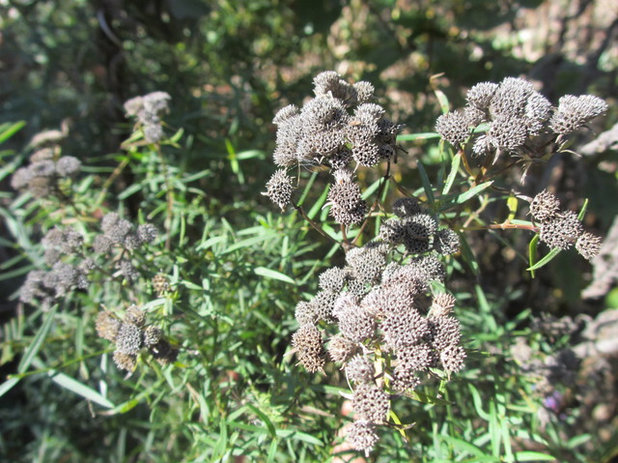
Benjamin Vogt / Monarch Gardens
Virginia mountain mint (
Pycnanthemum virginianum) is a great pollinator magnet while in bloom, and look, it even gives you something different in winter. These seed heads also carry a faint echo of the minty-smelling summer leaves. They’re just lovely with a dusting of snow.
How to grow Virginia mountain mint
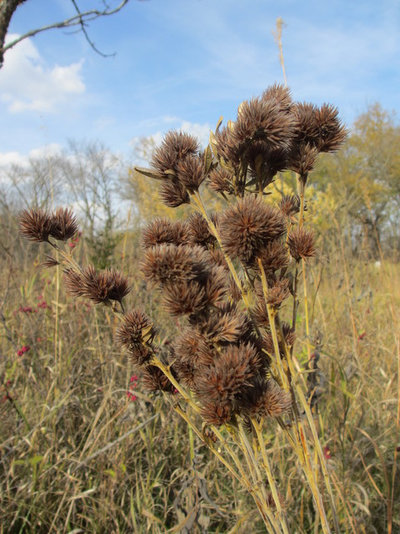
Benjamin Vogt / Monarch Gardens
Roundhead lespedeza (
Lespedeza capitata) is one of my new favorites. I think you can see why in this image. It has a unique winter look that remains perfectly intact into spring — unless the wildlife get hungry. I’d mass this plant in groups among grasses or low perennials.
7 Reasons Not to ‘Clean Up’ Your Fall Garden
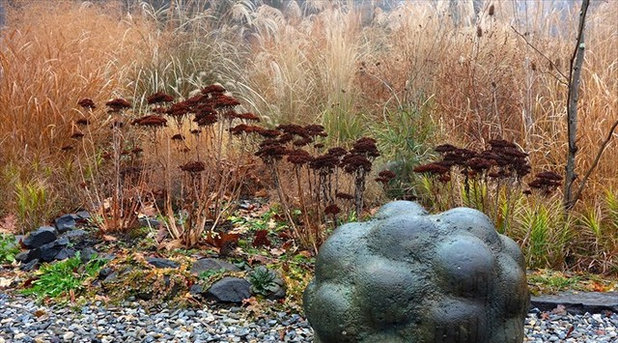
Mix it up in your landscape when designing for seed heads. Use some darker-colored plants in front or among grasses and let taller plants shoot up their varied umbels and stalks in both formal groups and informal, scattered wildness. Let those plants mingle in summer, and the autumn and winter show will be even more dramatic. Plant tightly and plant a lot. Help wildlife by leaving that thick garden standing, which will also help it overwinter.
Show us: What plant combos work well for you in the off-season? Are they turning your fall and winter garden into more of an on-season?





